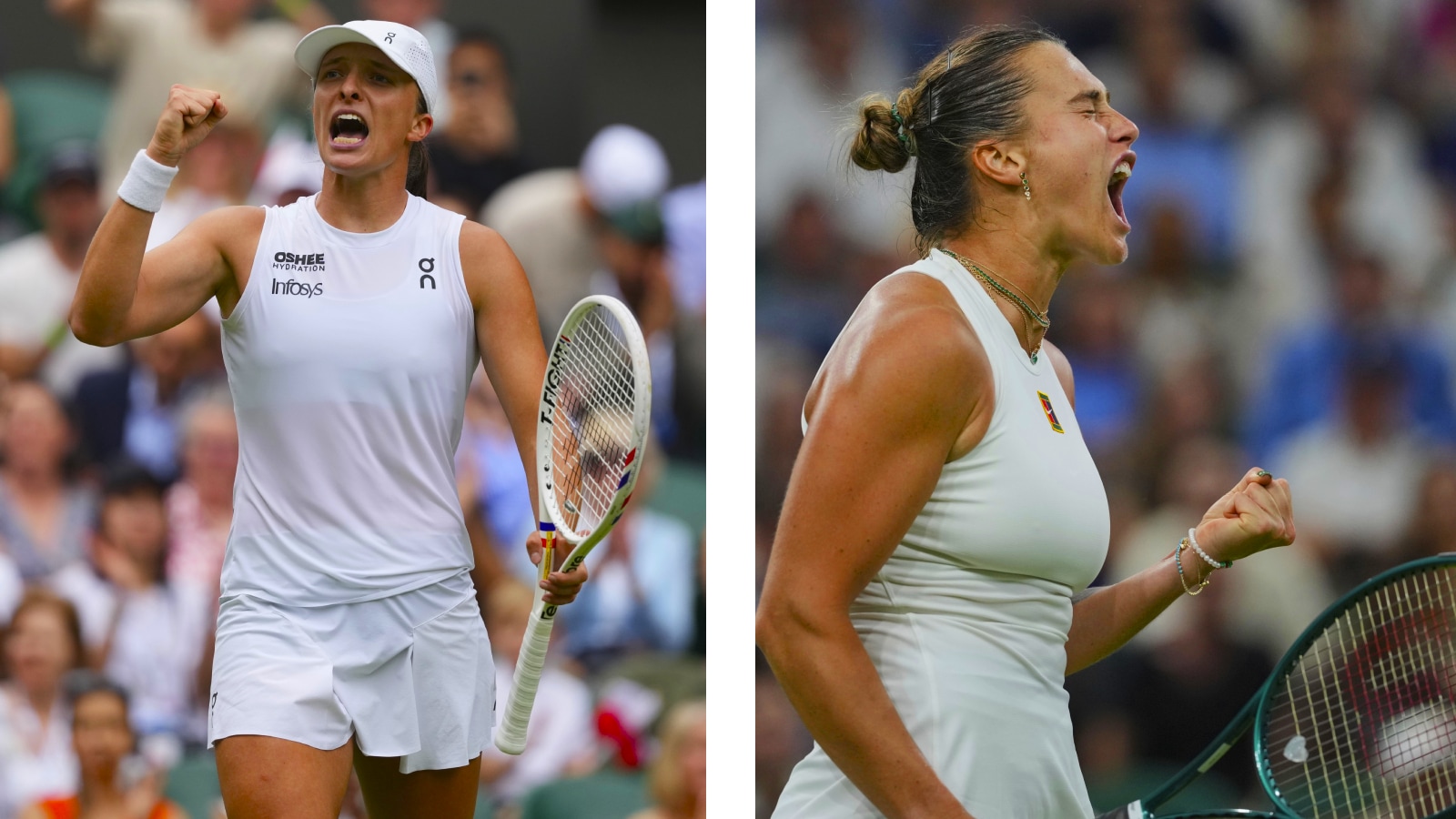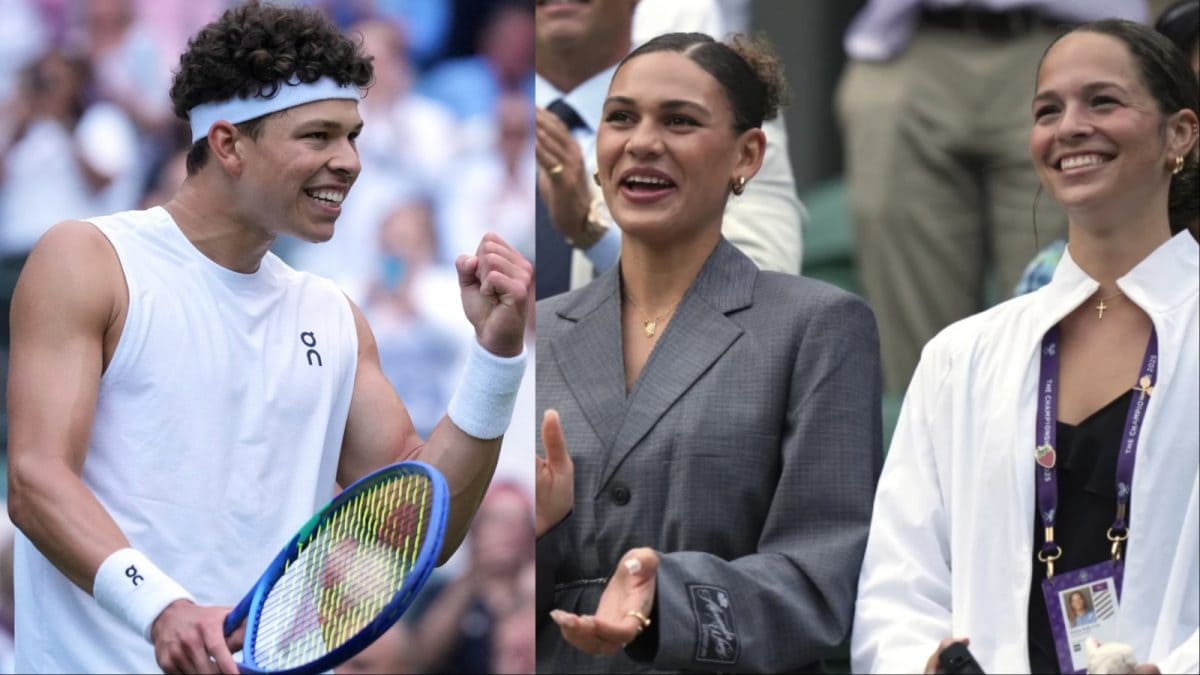ARTICLE AD BOX
There are 12 women’s singles shuttlers from Taiwan currently in the Top 100 this week. The bookendings don’t start until World No. 23 Sung Shuo Yun, their highest ranked, also having played more tournaments in the last 12 months than anyone else, tied with Japanese Tomoka Miyazaki on 22. Their last of the Top 100s is perhaps badminton’s most gleeful-making personality, a certain Tai Tzu-ying. Even six months after her retirement, the name, fading out of contemporary narratives and now at World No. 100, lights up the ranking page, and is a reminder of what that gutsy country elegantly offered the sport. There is a 13th player within the Top 105 who most likely will move up.
There are 15 women’s singles shuttlers from India in the Top 100. The bookends in the Top 105 — the tall fighting PV Sindhu clinging to the Top 20, and another towering talent, teenage Devika Sihag, hoping to jump into the Top 100. But together, India and Taiwan comprise 1/4th of those first 100s jostling to make a mark in the coming years, though the absolute present is floating on the mere promise of the future.
Capacity-building like in industry-speak takes time, and these two countries which have tasted top-notch badminton success, will need to bide their time before the heirs to Tai Tzu-ying and PV Sindhu announce themselves.
The little spunky nation to the northeast of mainland China, however, has flooded the circuit with bubbling talent, oozing ambition in all categories, unlike India. At the 2021 Tokyo Olympics, officially Chinese Taipei had a gold in men’s doubles, repeated at Paris sensationally, and a silver for Tai Tzu-ying.
The legacy isn’t wasted, and India — who have that same restless energy to get a move-on and no dearth of brains to pull it off too, but not quite the urgency — will need to listen to national coach Pullela Gopichand, who first noted the phalanx of Taiwanese bustling in the wings a year ago, and sensed what the future will look like.
In the men’s doubles Top 100, there are 13 Taiwanese pairs. Women’s doubles – 14. Mixed doubles – 8, though when one such combination came through qualifiers in the US Open and coolly packed off top seeds Tanisha Crasto and Dhruv Kapila in Round 1, it was apparent that rankings will get crushed as the fleet moves forward.
13 shuttlers from Taiwan are in the Top 100 of men’s singles, exactly as many as Indians. But Lin Chun-Yi and Lee Chia-Hao are already agents of chaos and fine skilled artistry and sizzling speed on the circuit even if the Top 20 duo are still held off to the Taiwan No. 1 spot by Chou Tien Chen.
Story continues below this ad
India with its massive population might still match them in the numbers of heaving masses trying to break through in every category (though India’s doubles numbers aren’t too great still), but the urgency that cracks Gopichand’s voice in providing the young Indian jostlers adequate support doesn’t match the energy shown by Taiwan.
Developmental squads, trying to collect points, living in budget accommodations and rationing their allowances or self-funded budgets, desperate to climb ranking ladders need basic support far more than top-ranked players who know the drill. Though efforts are on to make the new generation independent, because badminton budgets aren’t sufficient and numbers are growing, a situation where there’s not a single coach separately for singles — Manu Attri was looking after doubles — for all the Indians traversing North America, points to a gap in planning.
Additionally, at least two physios for the combined Indian bunch, even if practising at scattered academies across India, would be ideal. Though players are being taught to manage tapings and warm-ups and stretches and training drills on their own, and parents chip in too, it would make sense for the Indian contingent to have the bare minimum support staff shepherd them along, at Super 300s and 500s, to convert qualifiers into main draws and main draws into deeper quarterfinals and the weekends.
Not because the federation, or the Sports Authority which cleared these player budgets for this swing owes it to the players, but because maxing out these tours is possible with proper planning, and allowing 2-3 more support staff to help these still-yet-shine-stars along.
Story continues below this ad
Currently in the Top 70 to 30 bracket, these shuttlers are still figuring out a myriad of variables like court drifts, strategy against particular players, nutrition and sleep patterns, post-match recovery before the next match and travel as they climb rankings. If badminton needs dire support at any stage, it is this one.
Taiwan, going through a similar growth stage of transition from legends to new names, has been getting this aspect right.
Minor tournaments
Ayush Shetty jogged India’s attention to the minor tournaments with a title last week, and his coach Sagar Chopda echoes Gopichand in his assessment of the new “silently rising” superpower. “Taipei shuttlers have been doing really well since 2020. After Covid, Lee Chia-Hao and Lin Chun-Yi have impressed at top levels, but there’s hoardes coming through. And they are doing it all in silence without hype,” he says.
Chopda recalls the Polish Open of 2021, where Kiran George won, beating Chia-Hao in the finals. Today, the Taiwanese is World No. 20, while Kiran is trying to get a move on from No. 37. “But besides the finalist, there were two others with very impressive games. What struck me was their work ethic. At those Super 100s, they would travel by themselves in a group. And they had such tough practice sessions without any coach pushing them, and were disciplined,” Chopda said.
Story continues below this ad
What’s especially striking is how they build their fitness to last many tournaments, playing many on the trot. Ranking-rises tend to demand some heavy schedules and commensurate fitness bases. “Chou Tien Chen has played 23 tournaments in the last year, and Chia-Hao 20. Sometimes we Indians overthink about injury worries, saving up for a few events, and need to build fitness to play more,” he urges.
That takes money, which might still be the easier part that Taiwanese got right, but also conditioning that they quietly work on, taking their chances to push up rankings. India’s women’s singles especially — given that it’s not clear who amongst Tanvi Sharma, Anmol Kharb, Unnati Hooda, Rakshitha Ramraj, Anupama Upadhyaya, Devika Sihag or Shriyanshi Valishetty will break through – will need to be prepared for the Taiwanese hustle, given the career graphs of Tai Tzu-ying or PV Sindhu aren’t easy to replicate. What both nations have are numbers out there, and the ambition to fight.



.png)
.png)
.png)

























 English (US) ·
English (US) ·